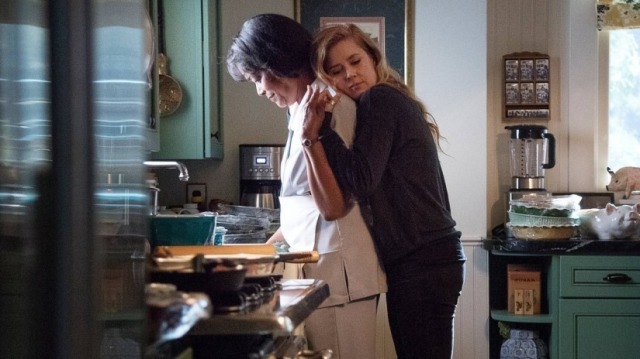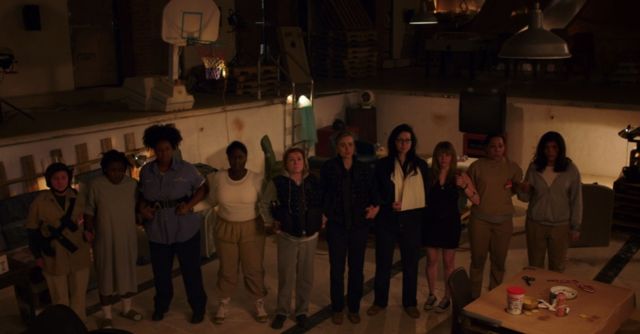
This article contains spoilers for the final season of House of Cards.
Claire Underwood (Robin Wright) on House of Cards, which dropped its sixth season on Netflix in early November, is the latest in a long line of woman presidents to leave the airwaves. Scandal’s Mellie Grant (Bellamy Young) is gone. State of Affairs, NBC’s drama about the first Black woman president Constance Payton (Alfre Woodard), was cancelled after one season. HBO’s Veep is on hiatus as Julia Louis Dreyfus, the actress who plays President Selina Meyer, undergoes breast-cancer treatment. And Underwood, the steely, blonde-bobbed, long-suffering First Lady, finally usurped her husband Frank (Kevin Spacey, who was fired from the show last year amidst sexual assault allegations) to become president. Ending the show with Underwood as the first woman to lead the United States also signals the end of TV’s wish-fulfillment of woman presidents.
While 25 other countries currently have female heads of state, American pop culture is consumed by its obsession with Hillary Clinton, with about just as many fictional depictions of a female president on the small screen alone. House of Cards leaned into this preoccupation hard, with Underwood’s icy, if at times boring, Clintonian competency juxtaposed with the circus that is current real-life U.S. politics.
For keen-eyed political pundits or, really, anyone who’s followed the news, House of Cards offered heavy-handed comparisons between Underwood and Clinton. For example, a conservative news host called Underwood a “pussy,” and, later in the season, the President reverted to her maiden name, Hale, a struggle which Clinton has also encountered.
But perhaps the most keen correlation between Hale and Clinton is the fact that their husbands fucked it up for them. Long-standing accusations of rape and sexual assault against Bill plagued the Clinton campaign. Hale probably thought her problems would go away with the death of her husband (“Doesn’t everyone love the widow?”). Though it was widely considered that House of Cards would have ended with this season regardless of Kevin Spacey’s sexual misconduct, in the show’s last gasp effort to wrap everything up by subbing in Hale as president, it did a disservice to the wish-fulfillment aspect of seeing a woman president on TV. Instead of a competent, qualified, Clinton-esque Commander in Chief, Hale was the result of the process of elimination of the inept men in the Oval Office’s orbit.
Speaking of inept men, in a plot that mirrored both Donald Trump’s accusation that Clinton lacked stamina on the campaign trial and Melania Trump’s mysterious exile from public view earlier this year, Underwood holed up in the White House residence for a month, feigning grief for her dead husband and a general unfitness for the job, reaffirming “America’s worst fear: a female in the Oval Office.” It’s House of Cards, though, so of course Hale had something up her sleeve. Her elaborate retirement to the proverbial fainting couch convinced her cabinet, consisted mostly of old, white men who didn’t look much different from their real-life counterparts, to begin the process of ousting her. Just in time, she dismissed her entire staff, declared that “the reign of the middle-aged white man is over,” and ushered in an all-woman cabinet. This may have appeared to be a bastion of gender equality and female empowerment to outsiders, however it was nothing more than a political power move to rub it in former friend and political donor Annette’s (Diane Lane) face, who had been blackmailing Hale with her past abortions in order to get her to succumb to the promises Frank made to Annette and her brother, Bill (Greg Kinnear).

In this way, House of Cards shared similarities with Scandal, in which two Clinton stand-ins were glimpsed: former First Lady and series-ending president, Mellie Grant (Bellamy Young), and political fixer and fellow First Lady, Olivia Pope (Kerry Washington). While Mellie spent Scandal’s seven seasons fighting to emerge from her husband President Fitzgerald Grant III’s shadow, Olivia occupied her own First Lady sojourn. In season five, Pope hosted a Christmas party at the White House where she offered a party-goer her snickerdoodle recipe, evoking Clinton’s infamous cookie quote. Pope ended that episode by having an abortion and leaving the president, just like Hale.
Much has been made of Hale’s decision not to have children in previous seasons. Though more people are choosing to remain child-free, it’s still a fraught conversation and, with Hale’s departure, the time is ripe not only for further explorations of child-free women who would have the means to access to childcare and nannies while they pursue their high-powered careers but, more interestingly, women who don’t and how that impacts their lives.
However, a House of Cards trademark twist came into play that turned the Clinton comparisons on their head: Hale ends the series with child! (Not because of any maternal calling but for political protection against Doug Stamper, Frank’s former chief of staff who has become obsessed with avenging the disgraced president’s death.) And it’s a girl! That, coupled with her all-female cabinet, solidified Hale’s femininity (because there’s no room for gender non-conformity in the White House of Cards or, indeed, in any White House) and, thus, feminism was fulfilled.
Hale was well aware that her pregnancy would shield her from a lot of criticism. She played into the perception of pregnant women as delicate, fragile and worth protecting (at least, the fetuses inside them) at all costs and used it to wreak political havoc. As follows, House of Cards could be seen to have flipped the wish-fulfillment of the show’s woman president again: that is what would happen if we let women and their hormones rule the free world.
While some of the remaining women TV presidents, such as Tea Leoni on Madam Secretary and Lynda Carter on Supergirl, have been seen uncomplicatedly aspirational, they, too, are changing in response to the current political climate. In the most recent season of Supergirl, President Olivia Marsden was outed as an alien, drawing on the birther conspiracy that followed Barack Obama’s presidency and echoing the groundswell around immigrant rights. Two years removed from the 2016 election, maybe one thing we can take solace in is that the new crop of shows with women presidents are tending away from the rigid ideals that boxed in Clinton and the characters inspired by her and allowing for a more multifaceted portrayal of women and power.
Elsewhere: [The Atlantic] A Short History of Hillary (Rodham) (Clinton)’s Changing Names.
[CNN] Donald Trump: Hillary Clinton “Doesn’t Have the Stamina” to be President.
[NYTimes] Hillary Clinton & the Return of the (Unbaked) Cookies.
[AV Club] Madame Secretary is Good, But it Could Stand to Be More Cynical.
Images via Robin Wright Site, Bustle.







